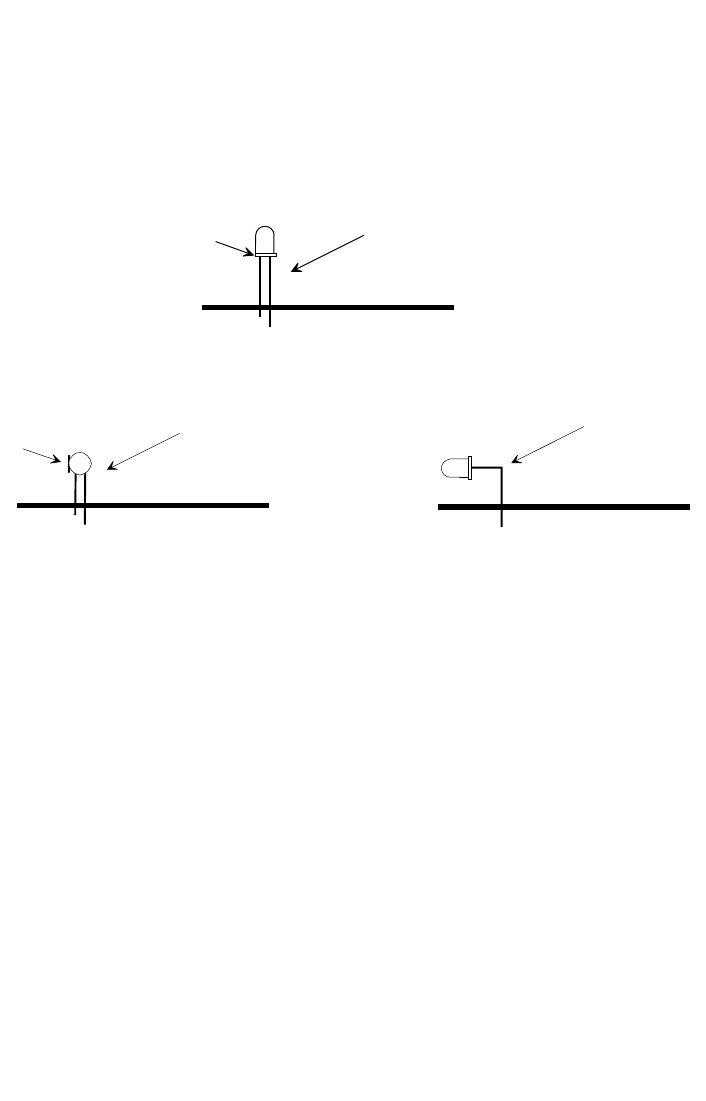
CT255 • 21
install all eight so that they are in line. A trick may be to fashion a cardboard
“standoff “ and pre-bend the LEDs before installing
35. Install D1, one of the LEDs. The flat side is oriented as shown in the
diagram. Leave it standing about 3/4 inch off of the board when soldering.
After soldering bend it over to a 90º angle at its midpoint so that it faces
the outside of the board. Observe the following diagrams for proper
orientation.
36. In the same manner install LED’s D2—D8, being sure to line them up
in a row.
Now we will install the final components of the thermometer kit, including the
precision temperature sensor. IF YOU WOULD LIKE TO WIRE THE SENSOR
FOR REMOTE OPERATION, DO NOT INSTALL IT AT THIS TIME. That will
be covered in the following assembly steps.
37. Install C4, .1 µF disc capacitor (marked 104 or .1).
38. Identify and install remote sensor connector J1 towards the rear of the
printed circuit board. Gently slide the leads through the circuit board until
the connector is flush to the board, and solder all five connections. Use
enough heat to flow the ground connection completely, but be careful not
to apply a hot iron tip for too long as it may “lift” the finer circuit traces..
39. IF YOU DO NOT WANT THE REMOTE SENSOR ONLY, install the
precision temperature sensor U3 with the flat side oriented as shown in
the parts diagram. This is the “typical “ configuration for home or office
use, as it allows the entire unit to be self contained in a box for display on
a desk or shelf.
Front View
LED
PC Board
Leave leads approximately
3/4 inch in length
(-)
(+)
Flat
Front View after Bending
LED
PC Board
Leave leads approximately
3/4 inch in length
(-)
(+)
Flat
Side View
LED
PC Board
Bend leads at a
90 degree angle


















